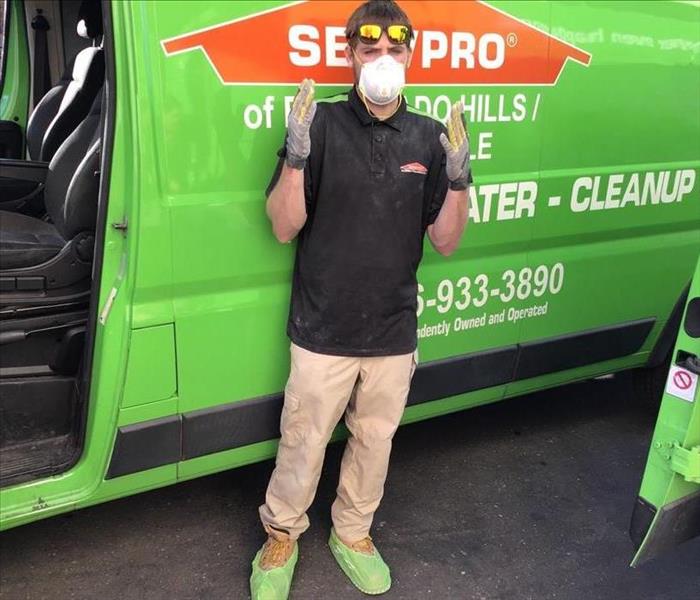Why Wear Personal Protective Equipment During A Biohazard?
2/16/2021 (Permalink)
 A customer called us for a biohazard in Camino. Different biohazard jobs require different sets of PPE. Call us 916-933-3890 for more information!
A customer called us for a biohazard in Camino. Different biohazard jobs require different sets of PPE. Call us 916-933-3890 for more information!
Personal Protective Equipment (PPE) is worn by professionals to reduce their exposure to biohazards and other hazardous materials that could cause illnesses or injuries. Our SERVPRO of El Dorado Hills/Placerville team wears PPE for various reasons.
Suits, waterproof boots, shoe covers, respirators, and gloves are all considered personal protective equipment. Suits can be several different colors (mainly blue, white, and yellow) and are used for different purposes. White suits are typically used for dust and debris protection during mold remediation, Coronavirus cleanup, or light general viral or bacterial cleaning. Blue suits are used for heavier contamination, but are not waterproof. Yellow suits are waterproof, non-breathable, and chemical resistant. These suits are used during chemical cleanup and blood or medical waste cleanup. Respirators are used at all times in hazardous cleanup situations. The staff at SERVPRO of El Dorado Hills/Placerville uses full-face respirators with HEPA and organic vapor and gas filters to protect themselves from hazardous odors, gases, blood dust, and splashes.
PPE helps to:
- Protect workers from the threat of viral and bacterial pathogens in the area.
- Protect area from potential contamination by our workers.
- Protect from harmful contaminants in water or particulates in the air during our fire restoration and water mitigation work.
Especially during the Coronavirus pandemic, our team is out in the field cleaning and sanitizing multiple businesses using our specialized cleaning and disinfecting products and need to be in full PPE the entire time. Our products are safe when used appropriately by a professional and according to label directions. PPE helps protect workers if there are suspected/known viral pathogens present. Call SERVPRO of El Dorado Hills/Placerville should you need a biohazard cleanup! 916-933-3890 any time of the day or night. We handle: sewage backups, crime scene residues, suicide/death accidents, homicide cleanups, blood cleanup, accident cleanup, hoarding scenes, animal waste/remains, chemical spills, tear gas cleanup, and meth lab cleanup.





 24/7 Emergency Service
24/7 Emergency Service